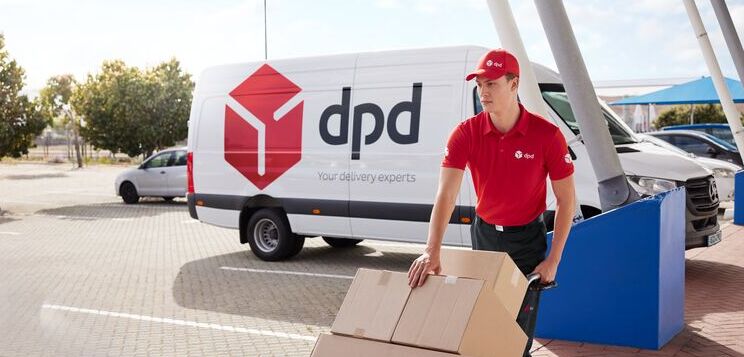4 ways optimization can be leveraged to improve your supply chain
Recently, we covered four great examples of how organizations are using optimization technology to address social problems in innovative ways. In a similar way, this post highlights four ways optimization can be leveraged to add value to your company’s supply chain.
1. Dealing with volatile demand – a beer can manufacturer optimizes its supply chain response
Demand for beer and soda can be extremely volatile, as it is strongly influenced by the weather or global events like this summer’s World Cup in Brazil. It is in that country that Crown Cork supplies the cans for the beer and soda industry, and needs to find ways to deal with these massive swings in demand. They operate a supply chain consisting of several aluminum sheet suppliers, four manufacturing plants producing cans and one producing lids, and one dedicated warehouse holding cans and lids for specific clients. Spanning across the vast Brazilian territory, their supply chain is tied together by multiple modes of transport, including rail, barge and several road transport modes. AIMMS partner UniSoma developed an application to help them find the best set of actions to supply their clients on a daily basis.
The Application allows Crown Cork to simulate several demand scenarios in advance, enabling them to explore what could happen and what the best response should be. In addition, when real changes in demand occur, they can explore the best way to respond to that change by asking the system to generate several scenarios for them to choose from. Because these scenarios are created with optimization technology, each of them reflects the best possible way to respond, given certain restrictions and objectives. Think, for instance, of being able to answer questions like: “what is the lowest cost scenario within my current capacity limits that meets the requirements of my key clients?” Or a question like “what is the lowest cost that meets all my clients requirements while allowing vendor orders to change?” Your imagination is the limit to exploring the best set of actions to respond to change.
2. Facing a declining market – a paper merchant develops a Supply Chain Optimization center in record time
Papyrus, Europe’s largest paper merchant, needed to respond to a 7% decrease in yearly paper consumption. They started by analyzing their supply chain footprint, (e.g. the number and location of warehouses they have), and what role they play in their various routes-to-customer. They learned four key things from this exercise:
- To arrive at the right cost level, they could take out at least half of their warehouses and depots;
- The deep insight they had built up to make the right SC design decision was developed by using SC Optimization principles like Smart What-if Analyses and Automatic Scenario Creation;
- In order to sustain their hallmark service level and flexibility, they had to design a new and innovative SC concept to drive goods through their supply chain;
- Papyrus felt that to manage their operations they needed to apply SC Optimization principles again. This would allow them to bring the new SC concept to the work floor.
Half a year after conceiving the idea, they are now rolling out a newly built & tested SC control tower application. The app allows them to centralize such capabilities as:
- Demand forecasting
- Demand planning
- Safety stock optimization
- Replenishment
- Purchase Order optimization
Besides addressing immediate challenges, the control tower application enables Papyrus to explore more advanced Supply Chain Optimization concepts, including multi-echelon inventory optimization, transport optimization, S&OP optimization, and further optimization of the procurement function.
3. Venturing into advanced S&OP – turning 50 different meat processing plants into a single production site that is easy to oversee
JBS is a global leader in meat processing with an annual revenue of $27 billion and over 50 processing plants in Brazil alone. Having a master production schedule that was supported by multiple spreadsheets, JBS’ operations department faced considerable challenges in their planning process. The company was in need of a solution that would allow them to explore the best ways to meet demand and allocate production capacity at their different plants while taking specific requirements like halal, kosher, and the legislation of the recipient countries into account. In addition, they needed to gain better insight into their cost-to-serve, and gain the ability to influence these costs when they are insufficiently profitable.
JBS decided to redesign their processes to allow for a systematic assessment and optimization of multiple scenarios on a much more detailed level. The system that they developed allows them to respond rapidly to changing market prices for all of their (intermediate) products on a daily basis. In addition, it allows them to compare these insights with the latest update of their demand scenarios, production capabilities, transport possibilities, and all associated costs.
The Results:
- A 25% increase to original margin
- 90% improvement on ‘adherence to plan’
- Increased adaptability and agility in the planning process
- An optimized product portfolio with the right inventory levels
- Integrating Cost-to-Serve analysis and considerations into the S&OP process
- The ability to collaboratively explore multiple scenarios
4. Maximizing capacity – an energy plant maximizes its output, while adhering to strict maintenance schedules
The Sasol Gas Engine Power Plant (SGEPP) is the largest plant of its kind in Africa. It is powered by 18 Wärtsilä gas engines with an installed capacity of 175 megawatts (MW), using natural gas as feedstock. Sasol’s Gas Engine Power Plant requires maintenance at very specific service intervals in accordance with the asset management plans. The duration of each maintenance interval is also dependent on the type of service being performed. Starting all 18 engines at the same time, for instance, results in the service schedules of all the machines coinciding. This would require a large number of maintenance teams during these service periods, but Sasol has only one core maintenance team available.
The Decision Support Group of Sasol Technology was tasked to develop an application to optimize the schedule for operating the gas engines. The difference in the duration of the shutdown periods for the various service intervals made it absolutely necessary to optimize the schedule over fairly long term periods (two years or more). This long term view, combined with a mixed integer scheduling problem, formed a large problem size that would require a powerful solver. Because this application would require multiple runs by laypersons, a user friendly human interface was also necessary. AIMMS provided an ideal solution: a powerful multi-solver optimizing tool with a configurable and adaptable user interface, capable of creating powerful user friendly applications.
Sasol managed to develop an application to create and optimize a schedule for the gas engines. The results indicate that the average engines online for the three months of winter 2014 can potentially be increased from 16 to 16.7 engines and for winter 2015 from 16 to 17.1 engines. This would not only ensure a large additional income for Sasol, but also improve electricity availability in the region.
While these cases vary in their field of application, time horizon, industry, and function in the supply chain, they all have something in common: a fast return on investment (ROI). In addition, as these cases illustrate, end-users and planners can make a huge contribution to their company’s success when they are empowered with easy-to-use tools that leverage optimization technology. I hope you find them inspiring!
Get a roundup of our best supply chain content every month in your inbox! Sign up for our blog digest here.





